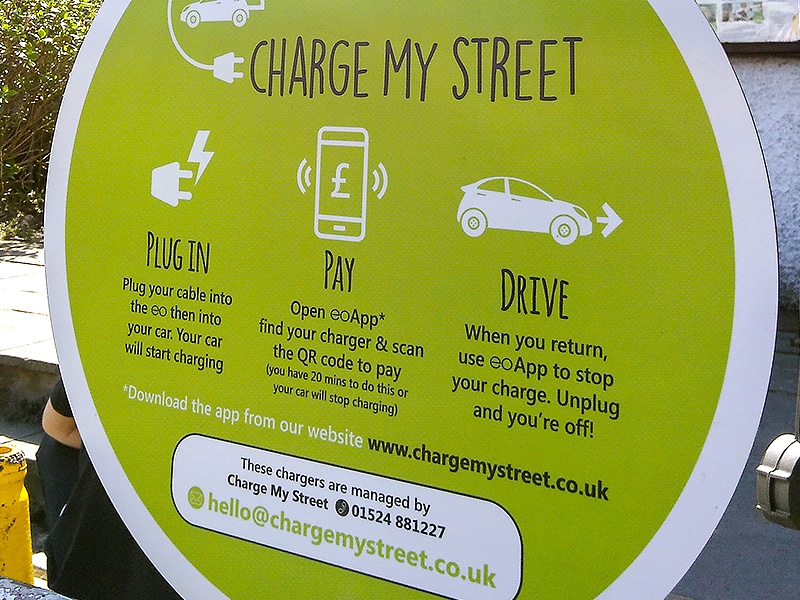
A chargepoint instructs new EV drivers on the charging process
When the UK government announced a few weeks ago that it was bringing forward the ban on the sale of petrol and diesel cars to 2035, I had two thoughts.
Firstly, in 2035 Greta Thunberg will be 32 years old (oh my god, I’m ancient); and secondly, how is the infrastructure going to keep up with such a target?
In its current state, the UK charging network isn’t ready for such a large-scale switch to EVs. Charge anxiety is already a well circulated phenomenon among long-distance EV drivers and that’s without the fear that there’s a good chance that any chargepoint you come across could be occupied by one of 30 million vehicles.
Recent items in the news have told how those voyaging by voltage are bypassing entire parts of the UK to make sure they could make it from one chargepoint to the next.
This is hardly surprising when out of all 30,812 public charging connectors in the UK, over one quarter of them are located in Greater London. Conversely, areas like Wales and the North East are scraping in less than 4% of the network each.
For most EV drivers this isn’t usually that big of a deal as most of their charging happens at home while they’re tucked up in bed. For over a third of UK residents though, this isn’t a possibility. Those living in terraced housing or in flats with on-street parking will find it tough to install EV chargepoints without trailing cables across the pavement or invoking the wrath of their landlord.
This was very much the realisation of Daniel Heery, an environmentally conscious resident of Lancaster who wanted to buy himself an EV, before his lack of charging options at his terraced home became starkly apparent.
Sharing is caring
Daniel had the idea that community venues like parish halls, churches and pubs could make suitable hosts for chargepoints. They generally have space for cars to park up; these spaces are often vacant overnight; and the venues themselves are common hubs for the locals, symbolising community and shared ownership.
Having previously worked on similarly climate conscious projects, he also had a knowledge of community share offers. Armed with all this, he rushed out and set up Charge My Street in 2018.
Charge My Street is a community benefit society that installs and maintains EV chargepoints using funding obtained through share offers to investors. It’s an organisation extremely focused on residents without their own driveways and shared ownership.
The society drew the eye of Innovate UK, the UK’s innovation agency (surprisingly enough). Through the £19,000 raised in the first share offer, CMS were able to install four chargepoints in the North West- two in Lancaster and two in Cumbrian villages.
These chargepoints were placed outside a pub, a community gym, a village hall and a boys and girls club in areas surrounded by plenty of terraced housing and some newly curious potential EV drivers.
The ultimate aim is for every home to be within five minutes’ walk of a public chargepoint. A vision that’s going to need to get a lot clearer fairly sharpish if the UK is going to hit that target in the next fifteen years.
This model of charging network expansion marks a change from the way the UK’s network has been operating so far. The biggest charging providers have done a brilliant job of ensuring that the busiest car parks of the busiest motorway service stations have plenty of sockets, but this doesn’t do much for the Newcastle flat-sharer or the Cumbrian villager.
Putting the funding in the hands of the people allows a bit more freedom apart from commercial instinct and makes it more likely that the church hall or the local B&B can become the host of a shiny new chargepoint.
Fast forward to today and following another grant from Innovate UK as well as Carlisle and South Lakeland councils, Charge My Street is ready to scale up its operations with 200 chargepoints planned between now and March of 2021. These are going to be spread across the North centred mainly in Cumbria, Lancashire and County Durham. This nationwide project is being supported by a whole pack of partners including Cumbria Action for Sustainability, a sustainability charity that is funnily enough based in Shropshire (not really).
To go with this new batch of chargepoints comes a sparkling new share offer which is also scaled up from the operations that came before. This time, £130,000 worth of shares are up for grabs between now and 31 March 2020 with a minimum investment of £100 and a maximum of £15,000. So, 8.7 extremely generous individuals would be able to wrap the whole thing up straight away.
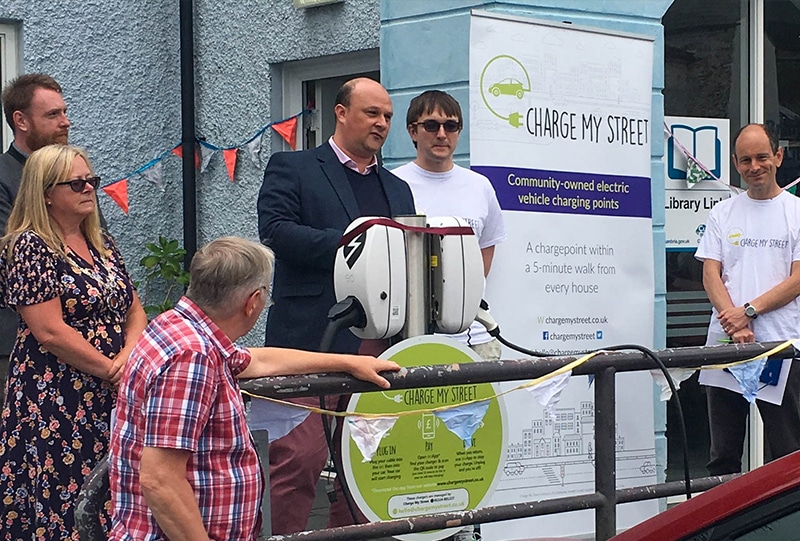
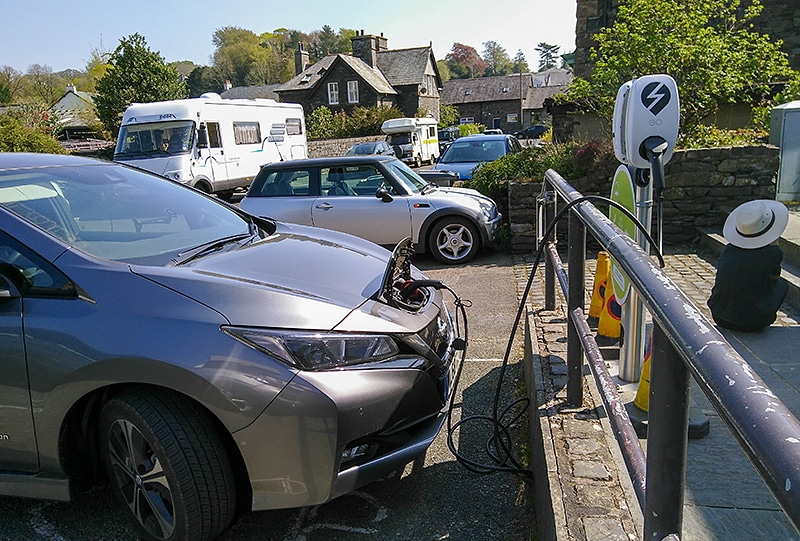
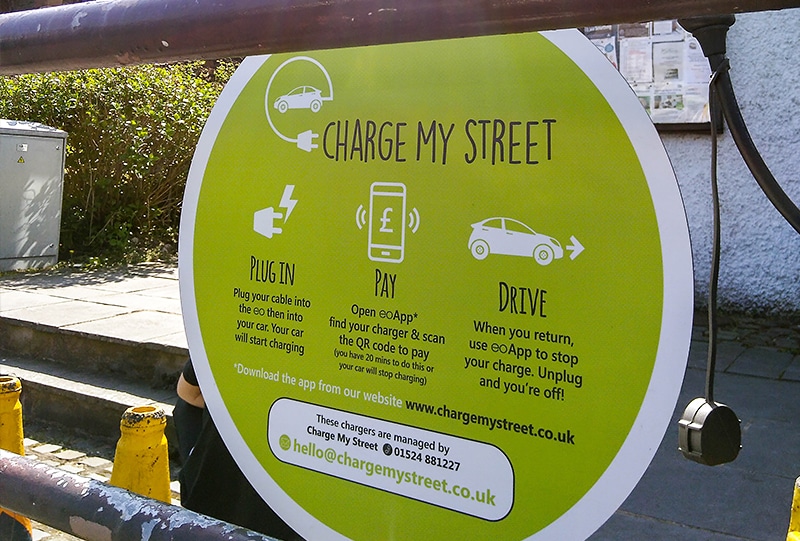
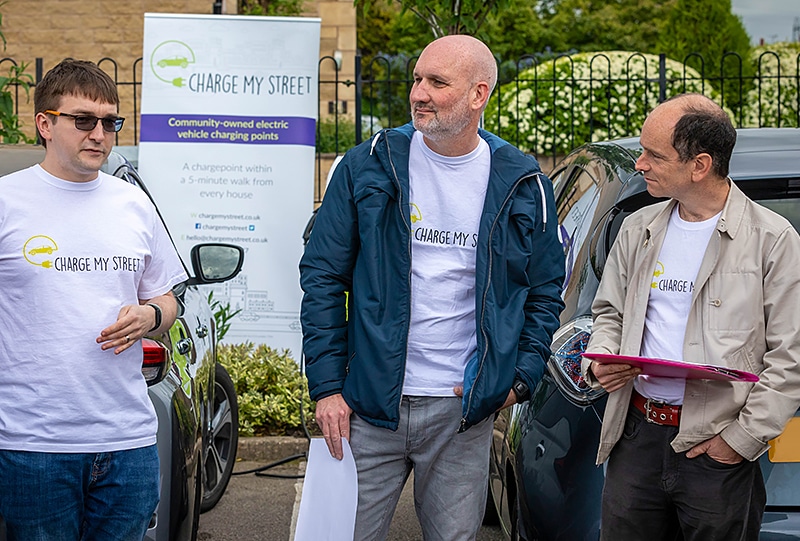
Locations, locations, locations
Once the funding has been raised, Charge My Street is turning its attention to where exactly these 200 chargepoints are going to be installed to make sure they make as much difference to the public as possible.
Basically, anywhere with the below criteria could be a potential site although the very best sites will have concentrated community enthusiasm to boot as well as a nominated chargepoint champion.
- Off-street space for two EVs
- Decent mobile data phone signal or open broadband
- Available for public charging during the night, day or both
- Near to terraced, flats or rented housing without off street parking
Chargepoint champions are individuals enthusiastic enough to be a point of contact for the public about all things EV and charging. The idea being that if a chargepoint is damaged or a visitor needs educated in the use of it, it’s easier to call Terry from down the road than it is to sit on hold for 40 minutes on a customer services line.
The incentive for landowners is fairly apparent, be they interested in attracting new visitors to their property or hoping to cut air pollution in their community, the pros heartily stack upon one another while the cons column lays bare.
Shareholders similarly are not required to solely do things out of the goodness of their heart. Based on the growth of current EV markets, Charge My Street is projecting an initial 2% return on investment with an increase to 5% after a few years. The investment also carries with it full SEIS tax relief and special rates for charging with the network.
The Charge My Street model of electric vehicle charging revolves around confidence. The confidence of the driver in the reliability of the charging network in their area; the confidence of the energy providers on the viability of community-owned chargepoints on the roads less travelled; and the confidence of the UK public that we can meet the target of full EV adoption by 2035 and have a country of drivers anxiety free and fully charged.

About the author
Kieran started out in local media as the face of That’s TV Cumbria as a video journalist and lead presenter before moving on to work for Cumbria Action for Sustainability to manage communications for their EV project. Working alongside national and international partners, the project aims to rapidly expand the EV charging network in the North of England. Having worked in local journalism in a rural corner of the country, he has seen first hand the efforts people are making to preserve their environment and is determined to not let himself slack off.





